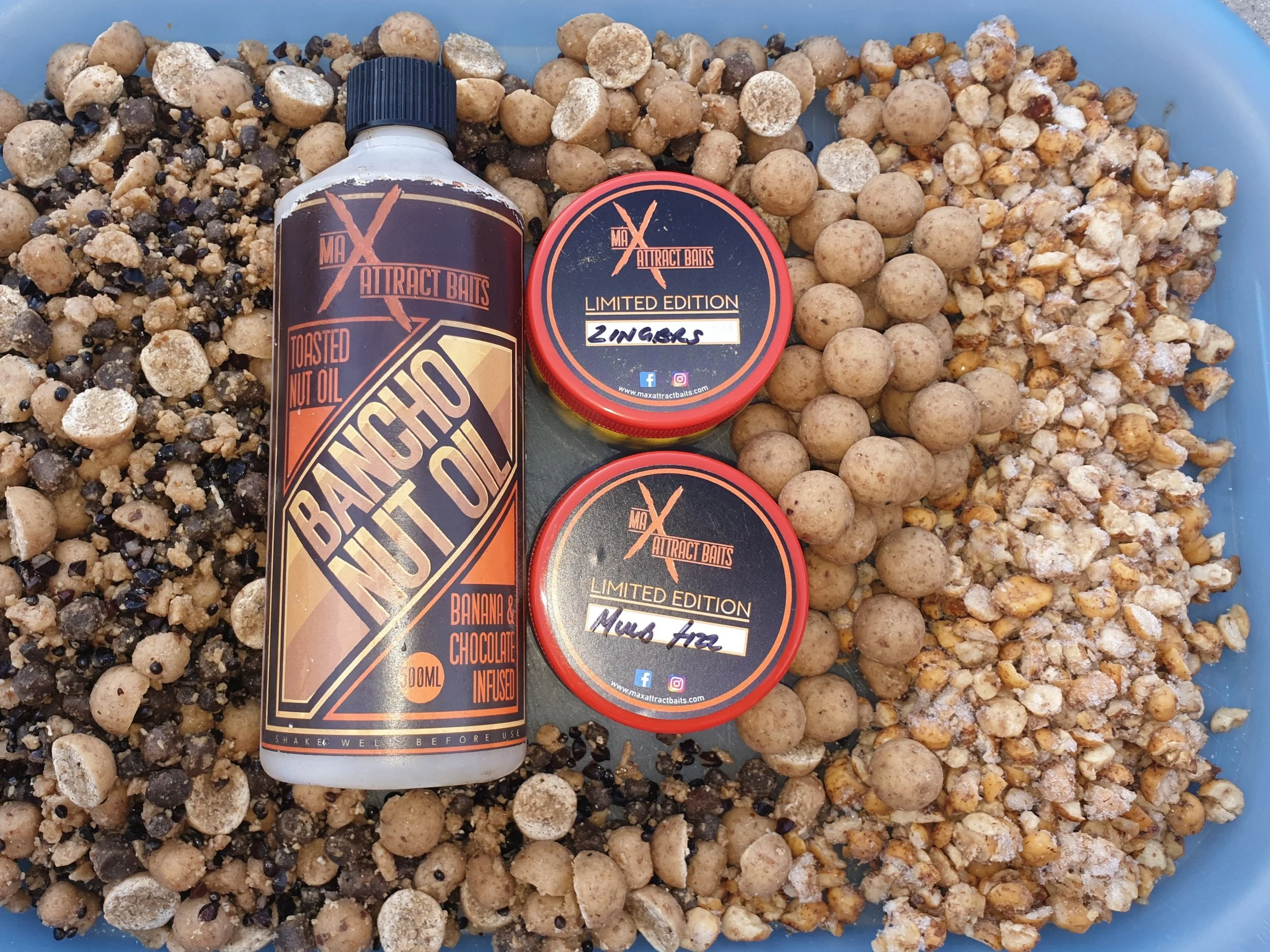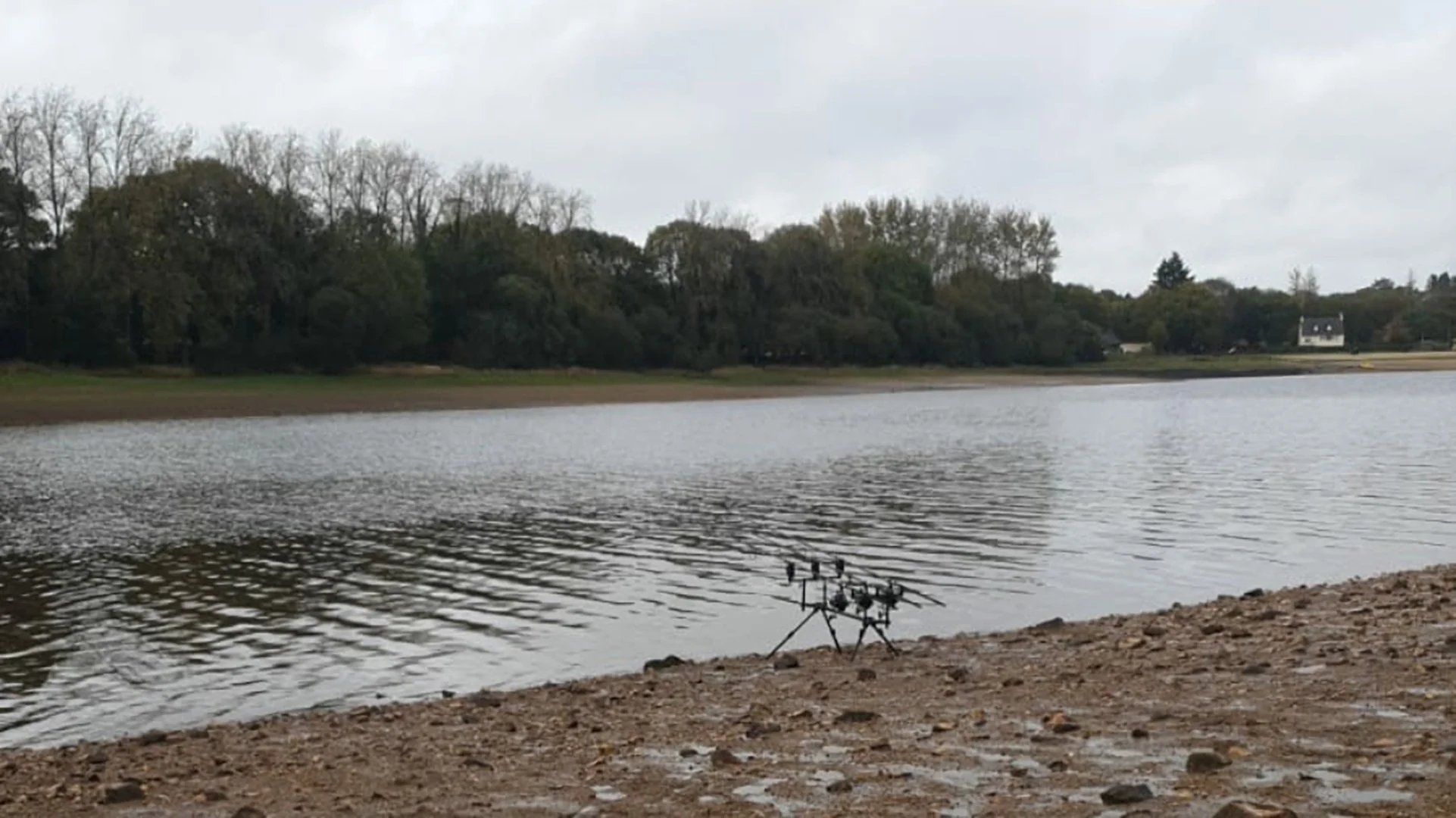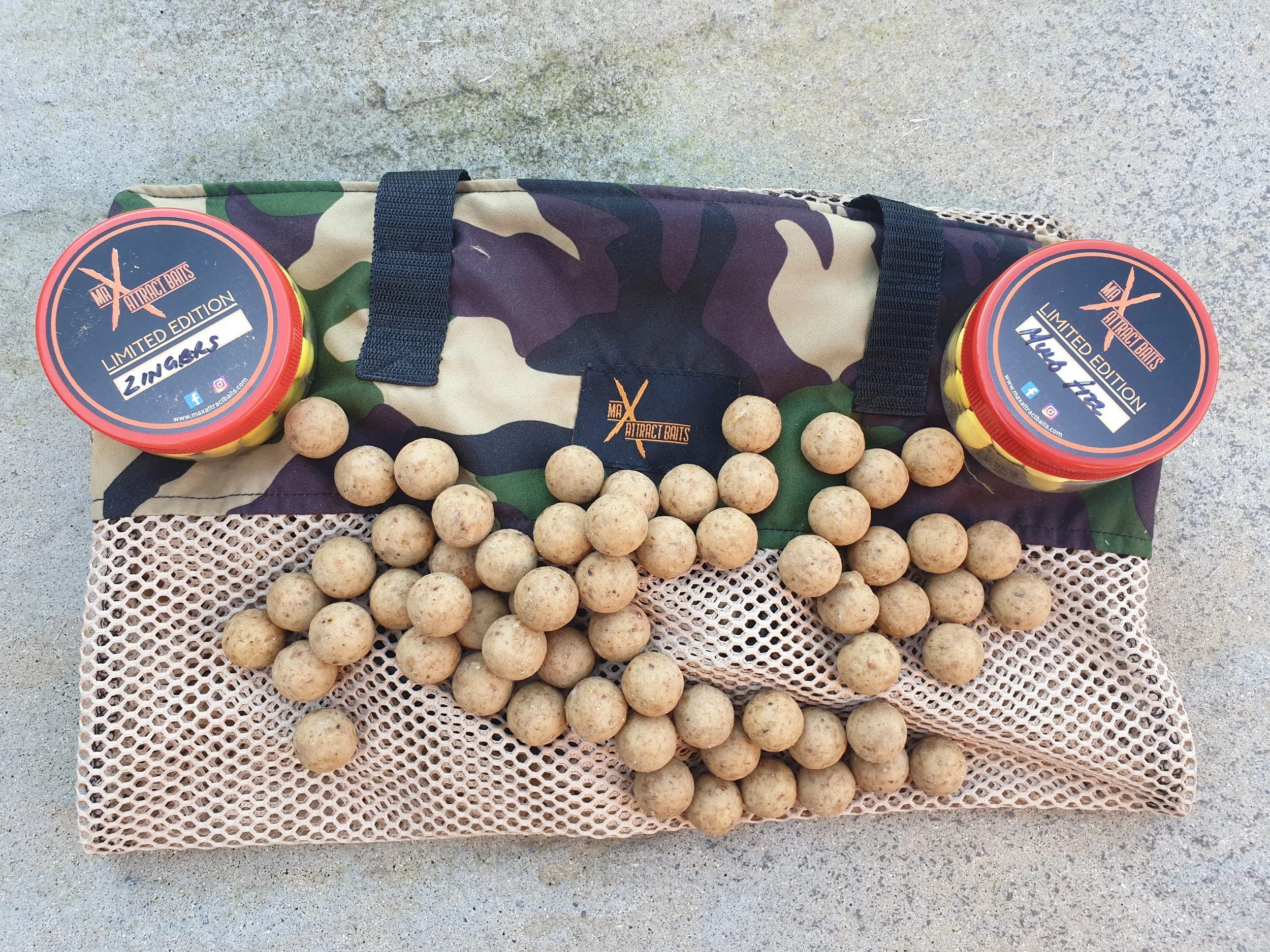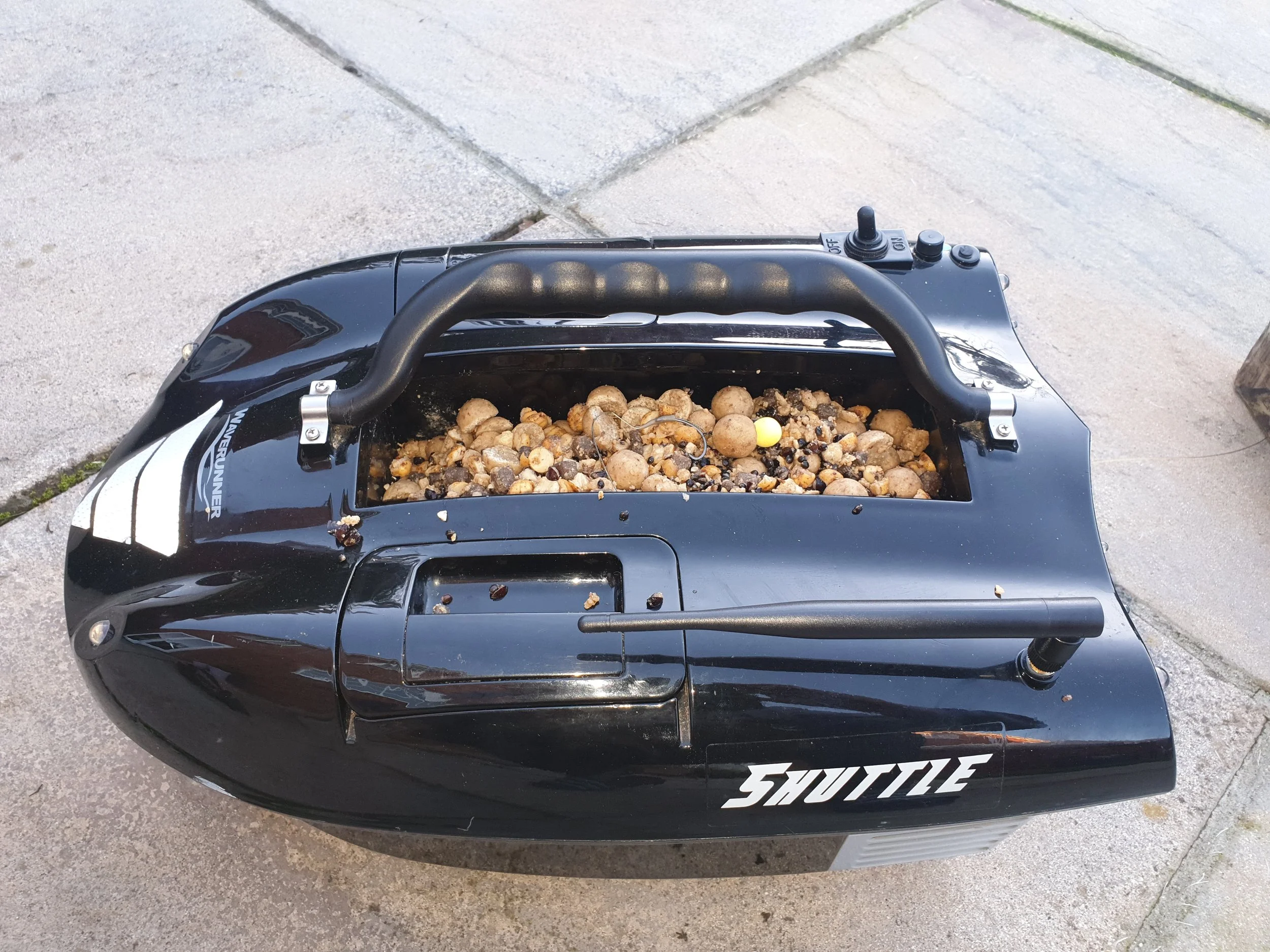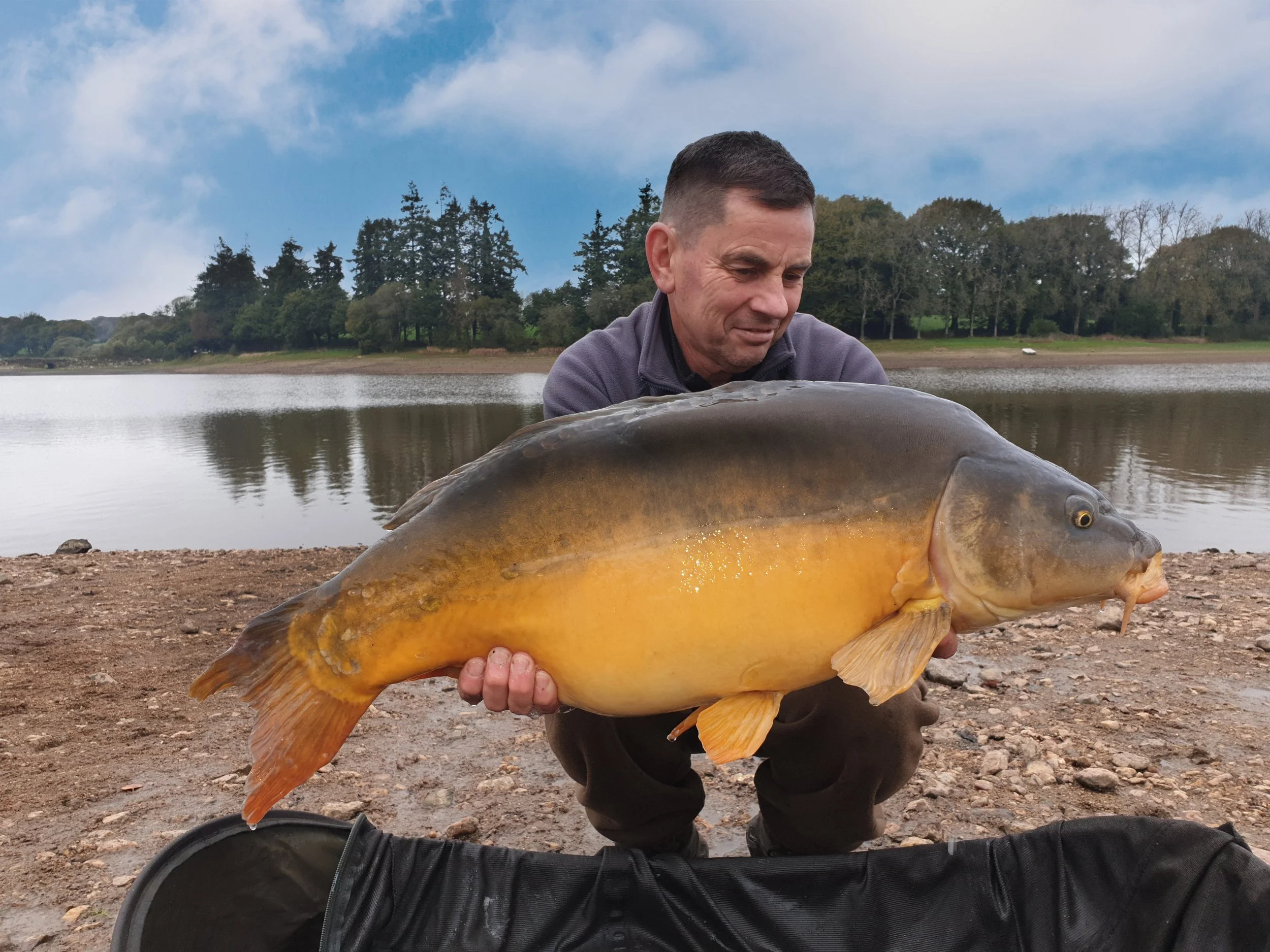Approaching a Public Water for the first time. W// Dan Williams
First steps
Attempting to fish a huge windswept public lake in France, or in any foreign country for that matter might sound like a daunting prospect, but the fundamentals are surprisingly straight forward and you may end up catching a fish of a lifetime and have an adventure all at the same time.
There are literally thousands of public waters in France, these waters consist of ponds, park lakes, reservoirs, canals and of course rivers, the majority of these waters contain carp. The French licence required for fishing public waters is known as the Carte de Peche. You can purchase your tickets in advance via the website that has a full English translation. The tickets are grouped by department (hence needing to know where you are looking to fish first) and reasonably priced. You can purchase an annual pass, a day ticket or a week-long permit.
Do your homework
There are a number of websites that can help you decide where you would like to fish. Personally, I found Carp Circle and Geo Carp of particular use. Google maps will be of great benefit in helping you decide where would like to fish. Simply search for a watercourse within the department you would like to fish and then identify the water. It is then a case of investigating the water on the internet and seeing if the water is suitable for your needs. On some waters, you will actually be able to see bivvies or parked cars indicating potential fishing spots.
When choosing a department, it is important to have several venues to choose from for various factors. Many of the barrages in France are used for drinking water or irrigation so in periods of dry weather, the water levels may be considerably lower than the images on google earth. Public waters are exactly that! You will be sharing the water with swimmers, sailboats, jet skis and other anglers to name a few of the activities. Be courteous to other people you meet, and this will often open up conversations that be of benefit to you in your fishing.
Not all venues allow night fishing, in fact, many do not allow you to camp by the lakeside so this will need to be factored in when choosing a venue. If your chosen venues have night fishing areas these will be highlighted by signs stating Peche de Nuit. Don’t get caught out as the Garde de Peche is likely to issue you with a fine or confiscate your expensive equipment.
When choosing venues to fish, look for waters based on what equipment you have and will be suitable for your needs. It’s no use fishing a 200-acre (or larger) reservoir if the fish are showing beyond your capabilities. Don’t be afraid to beef up your equipment either using tough braided mainline or snag leaders. Many venues contain some savage snags such as tree stumps, boulders or even submerged cottages!
My first experience
As highlighted above, I did considerable research online and talked to friends (thanks Mat!) when deciding on where we were going to fish once in France.
The majority of the venues we chose were considerably larger than anything that I have fished before. Most of these waters allowed the use of boats and electric engines. This was to be our first investment. Instead of forking out hundreds of pounds on the dreaded carp tax we scoured the local selling sites on Facebook and eBay and found what we needed for a fraction of the price of what you would pay from a dedicated carp manufacturer.
Due to the fact that we would both potentially be utilising the boat, we opted for a 3.1M boat with a powerful electric motor. The extra length proved to be a godsend during our trip due to the adverse weather we experienced. It goes without saying – every time you go out on a boat you MUST use a life jacket! Even if you are a strong swimmer. Once on the water, it is amazing the difference the wind makes compared to just standing on the bank.
Love them or hate them, bait boats can also be an effective tool when targeting larger waters. I used mine for the majority of my bait placement during our trip.
Our chosen venue for our first trip ended up being a 160 acre barrage, typical of the majority of the French barrages, it was created by the damming of an existing river. On arrival at the venue it was clear that the long dry summer had had an affect and the water levels were considerably lower than expected. Even though the water level was low there was still an awful lot of water to fish. Luckily we could drive round the majority of the lake therefore the first morning was spend investigating likely looking areas with marker rods and the deeper (trying to dodge the float tube anglers!)
The lake is questions contained a number of large shallow bays and the main body of water. We chose to set up in a central position fishing into the original water course. Luckily there were not any obvious snags in our swims and the bottom was fairy uniform.
I opted to fish either side of the original river bed and my fishing partner chose to fishing further out, either side of a large silty bay on the opposite bank. The reasoning behind my decision was that a central location would hopefully intercept fishing as they travelled between the bays – well that was the theory anyway!
Bait for the trip
My bait choice for the trip was simple – My catch rate since switching to the Bancho Nut from Max Attract Baits has been nothing short of amazing and it has caught me fish everywhere I have used it. As we had no idea on how bad the nuisance species and Crayfish were going to be I wanted to opt for larger baits. A quick chat with Mat soon had 10kg of 20mm Bancho nut being rolled for me along with some hardened 20mm hook baits. This would complement my usual 15mm Bancho Nut boilies. The boilies would be used in conjunction with a mix of whole and crushed tiger nuts, hemp and good old maize. All this would be generously coated in the new Bancho Nut oil and dedicated bait glug.
To aid us in finding features to fish we utilised the deeper sonar and a good old landing net poles as a prodding sticks. To mark any interesting features I created my own markers utilising empty fruit shoot bottles with reflective tape wrapped around them connected to lengths of braid. These would be placed a couple of rod lengths behind where we wanted our baits.
My spots were comfortable ranges to fish to being only 50 yards and 85 yards. I opted for one rod on the nearer spot with 2 rods fished to the far edge of the riverbed. My friend’s spots were much further out and required the boat as the ranges were in excess of 150 yards.
As the water levels were so low the bankside conditions were certainly something we were not use to and by the time we had all rods set up the area around our bivvies looked like a swamp!
First blood
The first evening we settled down to enjoy some nice French bread and cheese along with a nice bottle of red wine! We were not really expecting much action that first night due to the commotion of setting up and baiting but just after 8pm my middle rod absolutely tore off! I have not fished with braided mainline for a number of years now so forgot how brutal the battles can be! From the off it was clear that this was a good fish and after a strong fight my friend put the net under an incredible 43lb 4oz mirror carp! To say we were buzzing was an understatement!
My chosen rigs for the trip would be a stepped up version of the slip D rig that I have so much success on back home. The rigs were created using size 4 fox medium curve hooks tied with 25lb Camotex hook links. Hook baits would either be a snowman rigs using the 20mm hard hook baits along with fruit zinger or Mulbs pop up or a pair of drilled out tiger nuts. These would be fished on lead clips with heavy 5-6oz leads
I would have been content to have caught just one fish during the trip but in the early hours of the morning the same rod was away again with stunning high 20 mirror
This pattern continued throughout the 5 nights with consistent action to me each night, although I was catching a considerable number of bream on tiger nuts on the shorter range rod. This prompted me to change to snowman rigs on all 3 rods. By the time we had to pack away I had caught 11 carp, these included 1 x 40, 4 x 30’s, 5 x high 20’s and 1 x double. Interestingly the majority of the fish came to the middle rod even though my LH rod was only fished about 12ft away.
The bait boat was an essential tool which allowed me to accurately and stealthily bait each spot.
Whilst I was receiving steady action each night my partner was not receiving the same amount of action even though fish were showing over his spots. He did however persevere with his spots and ended up with 6 fish to mid 30 including the best looking fish of the trip.
During our trip, we did not see another carp angler for the whole trip, in fact with the exception of some bream and predator anglers we saw no one. Each night we had 160 acres of stunning wild water to ourselves.
Lessons learned
We learnt some valuable lessons during this first trip and also identified some items that will be of benefit to future trips:
The boat was a must – don’t scrimp on the quality and it should last you many trips. Luckily we only needed the one leisure battery for our trip but this would have drained quickly if we had to use it to get to the swims. Consider investing in a couple of batteries and a good quality solar panel of at least 100W in order to trickle charge batteries when not in use.
Provisions – many of the French public venues are located in remote regions and shops can be few and far between. A trip to a hypermarket prior to leaving the built-up areas will ensure that you are not left short.
Waders – all of the fish we caught were landed with the aid of waders due to the depth of water in front of us.
Bait – Frozen baits will quickly perish if not stored in the correct way and particles will go off quickly in the direct sun. The stabilised nature of Max Attract Bait makes them ideal for overseas trips and can be stored in the back of the bivvy until required.
Extra long tent pegs – the venue we chose had a very soft bottom and normal-length pegs were just being pulled out of the ground in high winds! We had to utilise boulders to keep them in the ground.
After the success of that first trip, we are already planning our next trip to another beautiful remote, wild french public water
Hopefully, this article will give you some inspiration and guidance to get out there and try it for yourself.
Tight lines and bon voyage!







